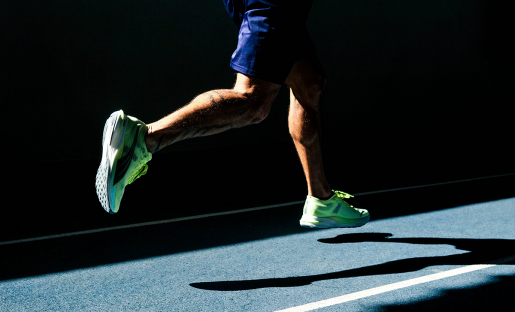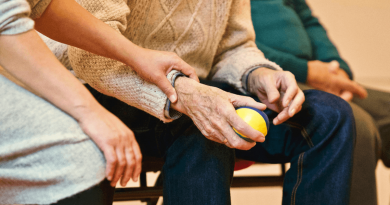Running care: Q&A with Marcus Knox
Running provides different benefits for the body, but it’s important to understand the proper way to care for your body before and after a run. Marcus Knox, physical therapist in the Joseph Barnhart Department of Orthopedic Surgery, provides tips on how to best prepare for your run while preventing injury.
 What does running do for your body physically?
What does running do for your body physically?
Running helps our bodies physically by improving our cardiovascular fitness, bone and joint health and also helps improve mental health by releasing endorphins.
How should you warm up for a run?
A dynamic warm-up that addresses all muscle groups should be performed before each run, this warms the muscles, joints and tendons prior to running. A dynamic warm-up can include doing heel scoops, knee-to-chest and lateral lunges.
How should you stretch?
Stretches that last at least 30 seconds should be performed after running. I like to stretch my quadriceps, calves, hip flexor and hamstrings. Those major groups will help keep your “run life” prosperous.
What injuries can you get while running?
We see a lot of foot injuries like plantar fasciitis or ankle pain, usually due to a lack of range of motion in the ankle and foot strength. Iliotibial Band (IT Band) syndrome is also a common injury for runners due to overuse, and that usually occurs usually because of weak hip strength.
To strengthen your hips, try these exercises:
- Lateral band walks (3 sets of 10 repetitions)
- Single leg balance (3 sets for 1 minute)
- IT band foam roller (2 minutes) and IT band stretch (3 sets for 30 seconds)
- Single leg heel taps (3 sets of 20 reps each leg): make sure your knee doesn’t dive inward
What are the best shoes for running?
It depends on the runner’s foot. We recommend going to a running shoe store that performs an in-depth foot analysis to determine the best type of shoe for your foot.
Is it better to run on a treadmill or outside?
I prefer to run outside. Depending on the surface, it can be easier on the body. There’s a difference between running on cement versus asphalt versus gravel, with cement being the hardest and gravel being the softest surface.
By Homa Shalchi



